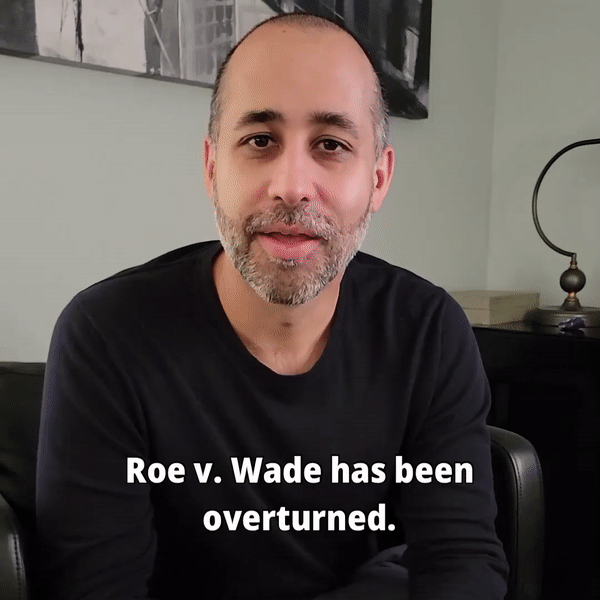Whether you thought he was a needed voice for judicial restraint and original intent or an obstacle to liberty and equality, most (but not all) legal professionals would agree that Justice Antonin Scalia will be remembered as a brilliant legal mind whose mark on American jurisprudence will be felt for years to come by liberals and conservatives alike.
And while there is much to debate regarding Scalia’s legacy and the merits of the originalist approach to constitutional rights that he famously championed, one thing is clear: sooner or later we are going to have a new justice sitting on the court. Emphasis on “sooner or later” as Senate Republicans have indicated that there will be no smooth road to confirmation of any imminent replacement nominees put forth by President Obama, and they may refuse to confirm any replacement at all. The plot twists of that particular political drama will of course unfold just as unpredictably as everything else that has occurred this election cycle, but the Supreme Court will proceed with or without a replacement.
Eight May Not Be Enough, But It’s What We’ve Got For Now
While the “unstoppable force vs. immovable object” storyline of the nomination process plays out, we know this much in the meantime: we now have an eight-person court with one less conservative voice than before, and the possibility of an Obama appointee on the way to fill the ninth spot. Which brings us to our question — what will this all mean in the near-term for how influential cases affecting US and international business are decided?
For many of the hot-button cases before the court, court watchers had been predicting 5-4 decisions (with Justice Kennedy being the perennial swing vote pushing the majority to five for several decades now). With Scalia’s absence, many of those controversial matters will likely end in a 5-3 decision if Kennedy sides with the liberal wing of the court, or a 4-4 tie if Kennedy sides with the now-reduced conservative wing.
Which begs the question, what happens if the justices have a tie vote? No reason to ring the constitutional crisis alarm bell, as justices have commonly recused themselves from certain cases, resulting in the occasional 4-4 tie. In such cases, the lower circuit court’s decision is simply affirmed and no national legal precedent is set.
So with that primer, let’s examine how the post-Scalia Supreme Court might rule in upcoming decisions affecting businesses.
Class Actions for Overtime Pay
In November, the court heard the case of Tyson Foods v. Bouaphakeo, which centers on the question of whether employees of the poultry giant could be certified as a class to bring a class action for overtime pay under the Fair Labor Standards Act. The workers had argued that, under the act, they were entitled to pay for all the time they spent putting on and taking off protective gear before and after their shifts. A federal jury in Iowa awarded the workers a $5.8 million dollar judgment which was then appealed by Tyson Foods.
In order to be certified as a class – which can give plaintiffs’ attorneys great leverage in bargaining for a large settlement as they are able to negotiate on behalf of hundreds and even thousands of plaintiffs at a time – the plaintiffs must show, among other things, that the individual plaintiffs had suffered similar injuries. At trial, the plaintiffs computed average amounts for the alleged overtime each employee was owed (as different employees took varying amounts of time with the gear), and Tyson Foods pushed back, saying using averages didn’t cut it for meeting the class certification similarity requirement. Reports indicate Justice Scalia appeared sympathetic to Tyson Food’s arguments for tougher class certification standards, but now the case looks like either a 5-3 win for the workers or a 4-4 tie, which would affirm the Eighth Circuit’s decision in favor of the workers.
Duties of Nonprofit Employers Under the Affordable Care Act
Two years after its controversial decision in the famous Hobby Lobby case, the court is set to rule in another matter regarding the ability of employers to opt out of mandates in the Affordable Care Act (aka “Obamacare”) on religious freedom grounds. In that case, where Scalia was part of a 5-4 majority, the court held that closely held for-profit corporations could be exempted from providing health care coverage for contraceptives under the religious freedom protections of the Religious Freedom Restoration Act (“RFRA”).
In Priests for Life v. Burwell, the court heard seven consolidated cases asking for the same exemption afforded to closely-held corporations in Hobby Lobby to be extended to non-profit entities, including hospitals, clinics, universities, schools, and social service groups, such that those entities could opt out from including contraception in its employee health insurance plan based on religious objections. Given the similarities to the Hobby Lobby case, it is likely that the justices will rule as they did in that case, but without Scalia’s vote, resulting in a 4-4 tie. Such a tie would affirm the lower court’s ruling that the ACA mandates do not create a substantial burden on non-profits’ rights under the RFRA and that they therefore must provide contraceptive coverage.
Public-Sector Unions’ Ability to Mandate Payment of Dues
The ability of public-sector unions to demand payments of dues from members has been the subject of debate for years. Some argue that such dues are unfair by forcing workers to support the union regardless of their individual views, thus violating their First Amendment rights, while others see the dues system as the only way to effectively represent worker rights. The case of Friedrichs v. California Teachers Association, argued just last month, gives the court the chance to overrule the 1977 case of Abood v. Detroit Board of Education, which had validated such fee arrangements as being compatible with constitutional protections.
The court pundits are less sure on how the justices would individually rule on this question of forced fee structures, given its peculiar juxtaposition of labor and First Amendment issues. The SCOTUSblog noted that the four liberal justices and Kennedy all expressed concern for upholding the precedent of Abood, and the Atlantic noted that even Scalia, who has championed unlikely parties such as flag burners and criminal defendants in the past, showed sympathy for the union but appeared unlikely to vote in their favor, while noting that Kennedy’s comments in past cases suggest a vote against the union. Thus, once again, Kennedy will likely be the swing vote, but at the very least Scalia’s absence improves the union’s chances.
Government Seizure of Assets Held in International Banks
Since 9/11 and the resulting Global War on Terror, much focus has been placed on using the law to target sponsors of anti-US violence through the banking systems. In the somewhat unusual case of Bank Markazi v. Peterson, a federal district court ordered that the Central Bank of Iran turn over $1.75 billion in cash to the representatives of hundreds of Americans killed in multiple Iran-sponsored terrorist attacks. Prior to the judgment, President Obama issued an executive order blocking the bank’s possession of assets in the US, and Congress took the arguably extraordinary act of passing legislation specifically directed at the bank, requiring that it surrender assets to satisfy any potential judgment.
The bank appealed the judgment against, arguing among other things that this confluence of executive, congressional, and judicial action violated the separation of powers the Constitutions requires between those various branches. Separation of powers constitutional arguments tend to be highly complex, and this case is even more complicated than most, so predicting the precedential value of this case for business matters, or even how the court will decide, is anything but straightforward. At any rate, given the increasing prevalence of cross-border banking in American business and around the world, it will be fascinating to see how the court treats the question of Congress’ ability to single out a bank’s regular banking activities.
Justice Scalia seemed unmoved by the bank’s arguments in oral arguments, and the terrorism aspects of the case make the bank an unsympathetic appellant if there ever was one. Court watchers predict that the judgment against the bank will be affirmed, which should prove interesting for how international banks conduct business in the future.
Affirmative Action in Education
While the use of affirmative action in college selection may not directly affect business, many large businesses (including GE, Apple, Wal-Mart, and Proctor & Gamble) have consistently supported the use of affirmative action as a way of promoting the diverse workforces they depend on. In 2013. the court decided the case of Fischer v. University of Texas at Austin, which sent a case attacking the school’s use of race in admissions back to the lower court for further review. The case has now made its way back up to the Supreme Court, which will decide if the school’s particular use of race violates the equal protection guarantees of the Fourteenth Amendment.
Justice Scalia, along with Justices Alito, Roberts, and Thomas, had historically viewed the constitutionality of affirmative action with skepticism, but his absence from the court is somewhat offset by the fact that Justice Kagan, a member of the liberal wing of the court, has recused herself from the case. Thus, only seven justices will be ruling on the matter, with, you guessed it, Justice Kennedy likely being the swing vote. Whatever the decision and its impact on the ability of public universities to incorporate race-based classifications into their admissions processes, the debate over affirmative action is certain to continue.
A Wild Ride Ahead
While the above cases currently before the court may be among the most relevant to businesses, there are even bigger headlines to come from the court in the coming months. The court is set to hand down potentially historic rulings related to President Obama’s executive orders on immigration in United States v. Texas and on abortion rights in Whole Women’s Health v. Cole, the court’s first ruling on abortion in 20 years.
And, of course, this all may be overshadowed by the nomination showdown between the Obama administration and the Republican-controlled Senate as the President seeks to name a successor to Scalia. Whatever happens in all of these matters, 2016 is shaping up to be a fascinating year for our country’s highest court.


![Vaccine Mandates Supreme Court Rulings [E317]](https://www.pashalaw.com/wp-content/uploads/2022/02/WhatsApp-Image-2022-02-11-at-4.10.32-PM-1024x723.jpeg)

![The Supreme Court Knows Nothing About Technology [e76] THE SUPREME COURT KNOWS NOTHING ABOUT TECHNOLOGY](https://www.pashalaw.com/wp-content/uploads/2014/08/THE-SUPREME-COURT-KNOWS-NOTHING-ABOUT-TECHNOLOGY.jpg)






![Law in the Digital Age: Exploring the Legal Intricacies of Artificial Intelligence [e323]](https://www.pashalaw.com/wp-content/uploads/2023/11/WhatsApp-Image-2023-11-21-at-13.24.49_4a326c9e-300x212.jpg)
![Unraveling the Workforce: Navigating the Aftermath of Mass Layoffs [e322]](https://www.pashalaw.com/wp-content/uploads/2023/07/Untitled-design-23-300x212.png)
![Return to the Office vs. Remote: What Can Employers Legally Enforce? [e321]](https://www.pashalaw.com/wp-content/uploads/2023/01/Pasha_LSSB_321_banner-300x212.jpg)
![Explaining the Hans Niemann Chess Lawsuit v. Magnus Carlsen [e320]](https://www.pashalaw.com/wp-content/uploads/2022/10/LAWYER-EXPLAINS-7-300x169.png)
![California v. Texas: Which is Better for Business? [313]](https://www.pashalaw.com/wp-content/uploads/2021/07/Pasha_LSSB_CaliforniaVSTexas-300x212.jpg)
![Buyers vs. Sellers: Negotiating Mergers & Acquisitions [e319]](https://www.pashalaw.com/wp-content/uploads/2022/06/Pasha_LSSB_BuyersVsSellers_banner-300x212.jpg)
![Employers vs. Employees: When Are Employment Restrictions Fair? [e318]](https://www.pashalaw.com/wp-content/uploads/2022/05/Pasha_LSSB_EmployeesVsEmployers_banner-1-300x212.jpg)
![Vaccine Mandates Supreme Court Rulings [E317]](https://www.pashalaw.com/wp-content/uploads/2022/02/WhatsApp-Image-2022-02-11-at-4.10.32-PM-300x212.jpeg)
![Business of Healthcare [e316]](https://www.pashalaw.com/wp-content/uploads/2021/11/Pasha_LSSB_BusinessofHealthcare_banner-300x212.jpg)
![Social Media and the Law [e315]](https://www.pashalaw.com/wp-content/uploads/2021/10/WhatsApp-Image-2021-10-06-at-1.43.08-PM-300x212.jpeg)
![Defining NDA Boundaries: When does it go too far? [e314]](https://www.pashalaw.com/wp-content/uploads/2021/09/Pasha_LSSB_NDA_WordPress-2-300x212.jpg)
![More Than a Mistake: Business Blunders to Avoid [312] Top Five Business Blunders](https://www.pashalaw.com/wp-content/uploads/2021/06/Pasha_LSSB_Blunders_WP-1-300x212.jpg)
![Is There a Right Way to Fire an Employee? We Ask the Experts [311]](https://www.pashalaw.com/wp-content/uploads/2021/02/Pasha_LSSB_FireAnEmployee_Website-300x200.jpg)
![The New Frontier: Navigating Business Law During a Pandemic [310]](https://www.pashalaw.com/wp-content/uploads/2020/12/Pasha_LSSB_Epidsode308_Covid_Web-1-300x200.jpg)
![Wrap Up | Behind the Buy [8/8] [309]](https://www.pashalaw.com/wp-content/uploads/2020/11/Pasha_BehindTheBuy_Episode8-300x200.jpg)
![Is it all over? | Behind the Buy [7/8] [308]](https://www.pashalaw.com/wp-content/uploads/2020/09/iStock-1153248856-overlay-scaled-300x200.jpg)
![Fight for Your [Trademark] Rights | Behind the Buy [6/8] [307]](https://www.pashalaw.com/wp-content/uploads/2020/07/Fight-for-your-trademark-right-300x200.jpg)
![They Let It Slip | Behind the Buy [5/8] [306]](https://www.pashalaw.com/wp-content/uploads/2020/06/Behind-the-buy-they-let-it-slip-300x200.jpg)
![Mo’ Investigation Mo’ Problems | Behind the Buy [4/8] [305]](https://www.pashalaw.com/wp-content/uploads/2020/05/interrobang-1-scaled-300x200.jpg)
![Broker or Joker | Behind the Buy [3/8] [304] Behind the buy - Broker or Joker](https://www.pashalaw.com/wp-content/uploads/2020/04/Joker-or-Broker-1-300x185.jpg)
![Intentions Are Nothing Without a Signature | Behind the Buy [2/8] [303]](https://www.pashalaw.com/wp-content/uploads/2020/04/intentions-are-nothing-without-a-signature-300x185.jpg)
![From First Steps to Final Signatures | Behind the Buy [1/8] [302]](https://www.pashalaw.com/wp-content/uploads/2020/04/first-steps-to-final-signatures-300x185.jpg)
![The Dark-side of GrubHub’s (and others’) Relationship with Restaurants [e301]](https://www.pashalaw.com/wp-content/uploads/2015/04/When-Competition-Goes-Too-Far-Ice-Cream-Truck-Edition-300x201.jpg)
![Ultimate Legal Breakdown of Internet Law & the Subscription Business Model [e300]](https://www.pashalaw.com/wp-content/uploads/2019/05/Ultimate-Legal-Breakdown-of-Internet-Law-the-Subscription-Business-Model-300x196.jpg)
![Why the Business Buying Process is Like a Wedding?: A Legal Guide [e299]](https://www.pashalaw.com/wp-content/uploads/2019/03/futura-300x169.jpg)
![Will Crowdfunding and General Solicitation Change How Companies Raise Capital? [e298]](https://www.pashalaw.com/wp-content/uploads/2018/11/Will-Crowdfunding-and-General-Solicitation-Change-How-Companies-Raise-Capital-300x159.jpg)
![Pirates, Pilots, and Passwords: Flight Sim Labs Navigates Legal Issues (w/ Marc Hoag as Guest) [e297]](https://www.pashalaw.com/wp-content/uploads/2018/07/flight-sim-labs-300x159.jpg)
![Facebook, Zuckerberg, and the Data Privacy Dilemma [e296] User data, data breach photo by Pete Souza)](https://www.pashalaw.com/wp-content/uploads/2018/04/data-300x159.jpg)
![What To Do When Your Business Is Raided By ICE [e295] I.C.E Raids business](https://www.pashalaw.com/wp-content/uploads/2018/02/ice-cover-300x159.jpg)
![General Contractors & Subcontractors in California – What you need to know [e294]](https://www.pashalaw.com/wp-content/uploads/2018/01/iStock-666960952-300x200.jpg)
![Mattress Giants v. Sleepoplis: The War On Getting You To Bed [e293]](https://www.pashalaw.com/wp-content/uploads/2017/12/sleepopolis-300x159.jpg)
![The Harassment Watershed [e292]](https://www.pashalaw.com/wp-content/uploads/2017/12/me-2-300x219.jpg)
![Investing and Immigrating to the United States: The EB-5 Green Card [e291]](https://www.pashalaw.com/wp-content/uploads/2012/12/eb-5-investment-visa-program-300x159.jpg)
![Responding to a Government Requests (Inquiries, Warrants, etc.) [e290] How to respond to government requests, inquiries, warrants and investigation](https://www.pashalaw.com/wp-content/uploads/2017/10/iStock_57303576_LARGE-300x200.jpg)
![Ultimate Legal Breakdown: Employee Dress Codes [e289]](https://www.pashalaw.com/wp-content/uploads/2017/08/Ultimate-Legal-Breakdown-Template-1-300x159.jpg)
![Ultimate Legal Breakdown: Negative Online Reviews [e288]](https://www.pashalaw.com/wp-content/uploads/2017/06/Ultimate-Legal-Breakdown-Online-Reviews-1-300x159.jpg)
![Ultimate Legal Breakdown: Social Media Marketing [e287]](https://www.pashalaw.com/wp-content/uploads/2017/06/ultimate-legal-breakdown-social-media-marketing-blur-300x159.jpg)
![Ultimate Legal Breakdown: Subscription Box Businesses [e286]](https://www.pashalaw.com/wp-content/uploads/2017/03/ultimate-legal-breakdown-subscription-box-services-pasha-law-2-300x159.jpg)
![Can Companies Protect Against Foreseeable Misuse of Apps [e285]](https://www.pashalaw.com/wp-content/uploads/2017/01/iStock-505291242-300x176.jpg)
![When Using Celebrity Deaths for Brand Promotion Crosses the Line [e284]](https://www.pashalaw.com/wp-content/uploads/2017/01/celbrity-300x159.png)
![Are Employers Liable When Employees Are Accused of Racism? [e283] Racist Employee](https://www.pashalaw.com/wp-content/uploads/2016/12/Are-employers-liable-when-an-employees-are-accused-of-racism-300x159.jpg)
![How Businesses Should Handle Unpaid Bills from Clients [e282] What to do when a client won't pay.](https://www.pashalaw.com/wp-content/uploads/2016/12/How-Businesses-Should-Handle-Unpaid-Bills-to-Clients-300x159.png)
![Can Employers Implement English Only Policies Without Discriminating? [e281]](https://www.pashalaw.com/wp-content/uploads/2016/11/Can-Employers-Impliment-English-Only-Policies-Without-Discriminating-300x159.jpg)
![Why You May No Longer See Actors’ Ages on Their IMDB Page [e280]](https://www.pashalaw.com/wp-content/uploads/2016/10/IMDB-AGE2-300x159.jpg)
![Airbnb’s Discrimination Problem and How Businesses Can Relate [e279]](https://www.pashalaw.com/wp-content/uploads/2016/09/airbnb-300x159.jpg)
![What To Do When Your Amazon Account Gets Suspended [e278]](https://www.pashalaw.com/wp-content/uploads/2016/09/What-To-Do-When-Your-Amazon-Account-Gets-Suspended-1-300x200.jpg)
![How Independent Artists Reacted to Fashion Mogul Zara’s Alleged Infringement [e277]](https://www.pashalaw.com/wp-content/uploads/2016/08/How-Independent-Artists-Reacted-to-Fashion-Mogul-Zaras-Alleged-Infringement--300x159.jpg)
![Can Brave’s Ad Replacing Software Defeat Newspapers and Copyright Law? [e276]](https://www.pashalaw.com/wp-content/uploads/2016/08/Can-Braves-Ad-Replacing-Software-Defeat-Newspapers-and-Copyright-Law-300x159.jpg)
![Why The Roger Ailes Sexual Harassment Lawsuit Is Far From Normal [e275]](https://www.pashalaw.com/wp-content/uploads/2016/07/WHY-THE-ROGER-AILES-SEXUAL-HARASSMENT-LAWSUIT-IS-FAR-FROM-NORMAL-300x159.jpeg)
![How Starbucks Turned Coveted Employer to Employee Complaints [e274]](https://www.pashalaw.com/wp-content/uploads/2016/07/iStock_54169990_LARGE-300x210.jpg)
